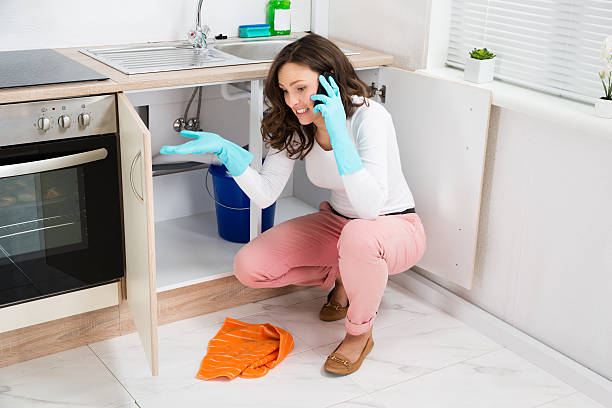Maintaining your plumbing system is vital to prevent costly repairs and water damage. Drain pipes, in particular, are susceptible to various problems, including clogs, leaks, and breaks. Understanding how to identify these issues early and knowing when to repair them yourself versus calling a professional can save you time and money.
Common Signs of Drain Pipe Problems
Being able to recognize the early signs of drain pipe problems can help you address issues before they become major headaches. Here are some common indicators:
- Slow Draining: If water drains slowly from your sink, tub, or toilet, it could indicate a clog or blockage in the drain pipe.
- Bad Odors: Unpleasant smells emanating from your drains can signal a buildup of waste, mold, or mildew within the pipes.
- Water Backups: Frequent water backups in sinks, tubs, or toilets are often a clear sign of a drain pipe issue.
- Gurgling Sounds: Strange noises coming from your drains when water is running often indicate a blockage or air trapped in the pipes.
- Visible Leaks or Water Damage: Water stains, dampness, or visible leaks around plumbing fixtures or walls suggest a broken or leaking drain pipe.
Causes of Drain Pipe Damage
Understanding the common causes of drain pipe damage can help you prevent issues from occurring in the first place. Here are some typical culprits:
- Aging Pipes: Older pipes are more prone to wear and tear, corrosion, and eventual failure.
- Tree Root Intrusion: Roots from nearby trees can infiltrate and block or damage underground drain pipes.
- Clogs: Accumulations of grease, hair, soap, and other debris can lead to clogs and pressure buildup, causing pipes to crack or burst.
- Improper Installation: Poorly installed pipes can lead to misalignment, leaks, and other issues over time.
- Ground Shifts: Natural ground movements or settling can cause pipes to shift, crack, or break.
DIY Drain Pipe Repair Techniques
For minor issues, you might be able to handle the repairs yourself. Here are some DIY techniques for common drain pipe problems:
- Clearing Clogs:
- Plunger: A plunger can often dislodge minor clogs in sinks and toilets.
- Drain Snake: A drain snake or auger can reach further into pipes to break up and remove tougher clogs.
- Baking Soda and Vinegar: Pouring a mixture of baking soda and vinegar followed by hot water can help dissolve minor blockages.
- Fixing Leaks:
- Pipe Sealant: For small leaks, applying a pipe sealant or epoxy putty can provide a temporary fix.
- Pipe Clamps: Use pipe clamps to secure the area around a leak temporarily until a more permanent solution can be implemented.
- Replacing a Section of Pipe:
- PVC Pipes: For damaged PVC pipes, you can cut out the damaged section and replace it with a new piece using PVC primer and cement.
- Metal Pipes: For metal pipes, you might need a pipe cutter and appropriate fittings to replace the damaged section.

When to Call a Professional
While some drain pipe issues can be tackled with DIY methods, certain problems require professional intervention. Here’s when you should call a plumber:
- Recurring Clogs: If you experience frequent clogs despite regular cleaning, a professional can perform a thorough inspection and cleaning.
- Major Leaks: Significant leaks or water damage often indicate a need for professional repair or pipe replacement.
- Sewage Smells: Persistent sewage odors suggest a serious problem with your sewer line that requires expert attention.
- Multiple Affected Fixtures: If multiple fixtures are experiencing issues simultaneously, it’s likely a sign of a broader problem in the main drain line.
- Tree Root Intrusion: Professional plumbers have the tools and expertise to handle root intrusion without causing further damage to your property.
Cost of Drain Pipe Repair
The cost of drain pipe repair can vary widely based on the extent of the damage and the type of repair needed. Here are some average costs:
- Minor Clogs: $100 to $200
- Leak Repairs: $150 to $350
- Pipe Replacement: $500 to $1,000 per section
- Sewer Line Repair: $1,000 to $4,000
- Emergency Repairs: Can significantly increase costs due to after-hours service fees
Preventive Maintenance Tips
Preventive maintenance can help you avoid costly repairs and extend the life of your drain pipes. Here are some tips:
- Regular Cleaning: Use drain cleaners or natural solutions like baking soda and vinegar regularly to prevent buildup.
- Avoid Pouring Grease Down Drains: Grease can solidify and cause clogs. Dispose of it in the trash instead.
- Install Drain Screens: Use drain screens to catch hair, food particles, and other debris before they enter your pipes.
- Schedule Professional Inspections: Have a plumber inspect your plumbing system annually to catch potential issues early.
- Address Minor Issues Promptly: Fix small leaks and clogs immediately to prevent them from becoming major problems.
Drain pipe repair is an essential aspect of maintaining your home’s plumbing system. By understanding the signs of drain pipe problems, common causes of damage, and when to perform DIY repairs versus calling a professional, you can ensure your plumbing system remains in good working order. Regular maintenance and prompt attention to issues can save you time, money, and headaches in the long run. Remember, while DIY solutions can handle minor problems, don’t hesitate to call a professional plumber for more complex or severe issues to ensure a thorough and effective repair.



Leave a Reply